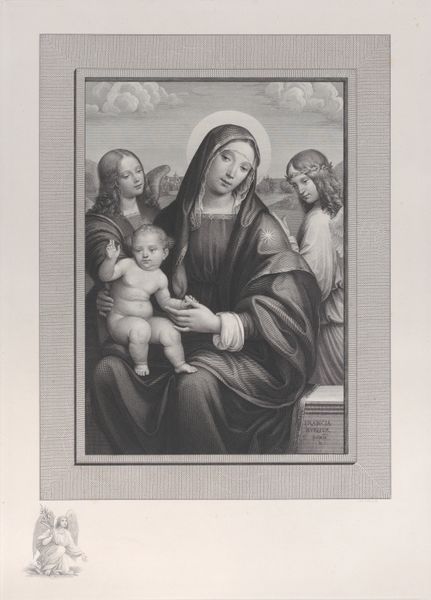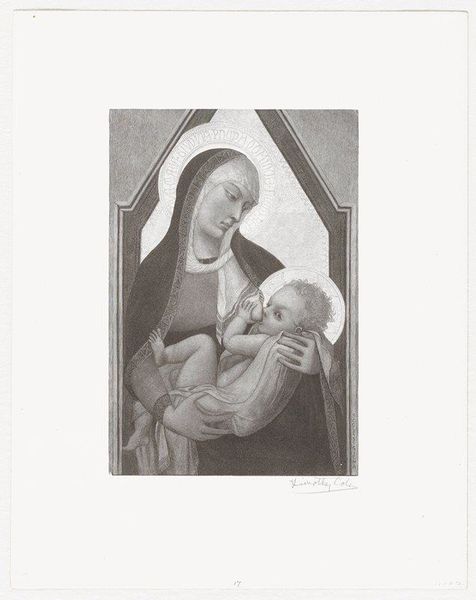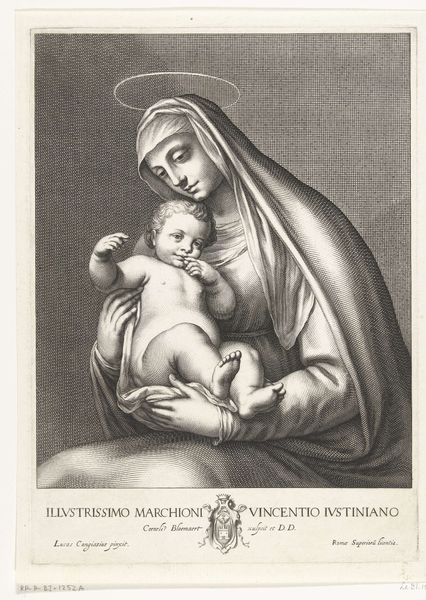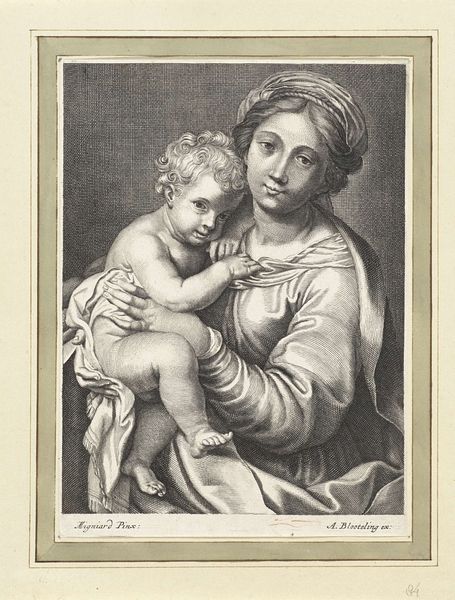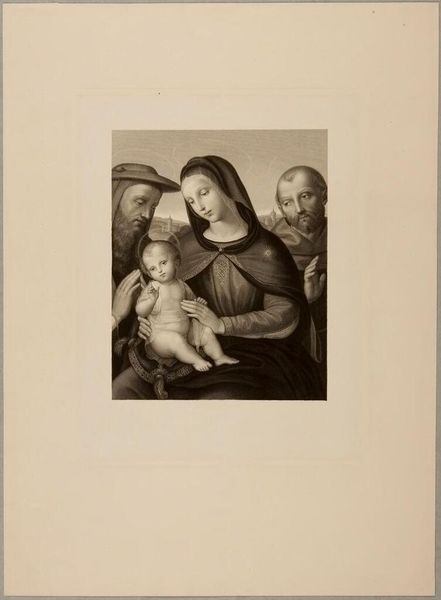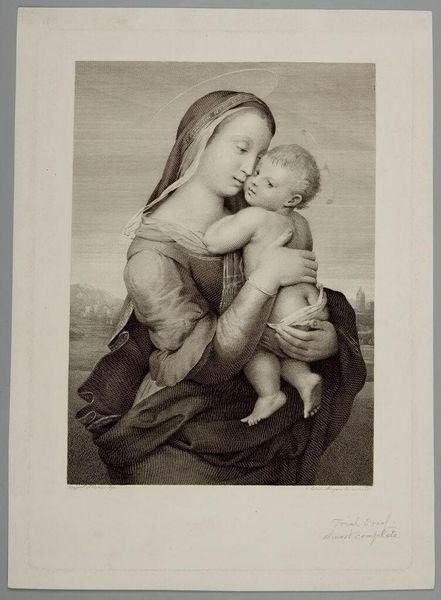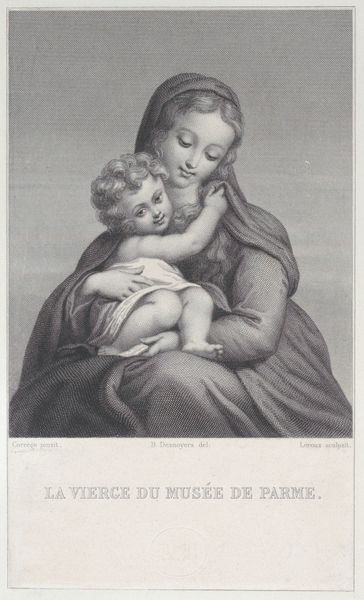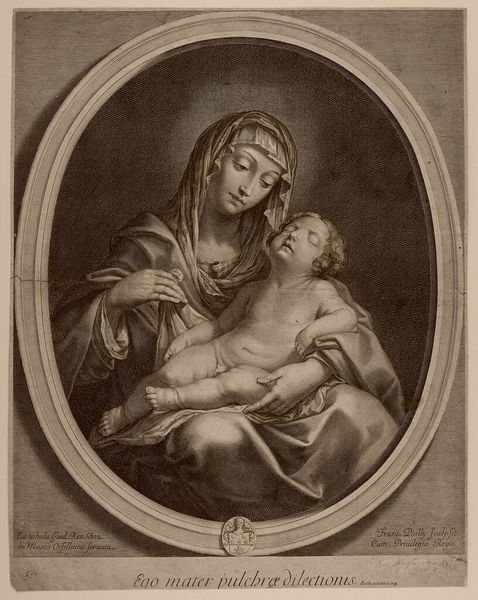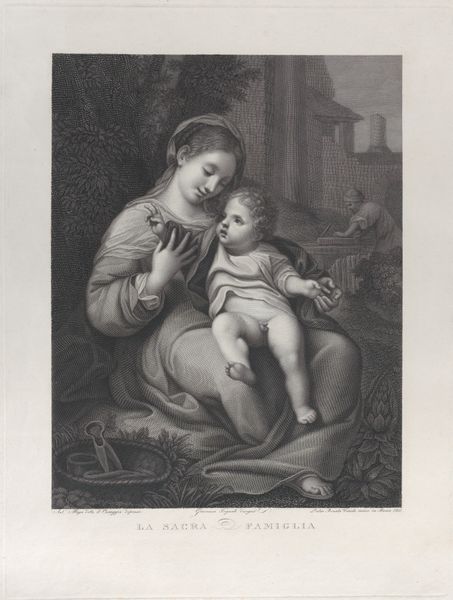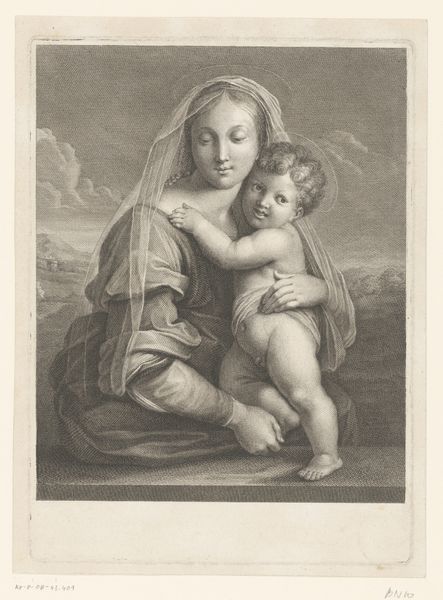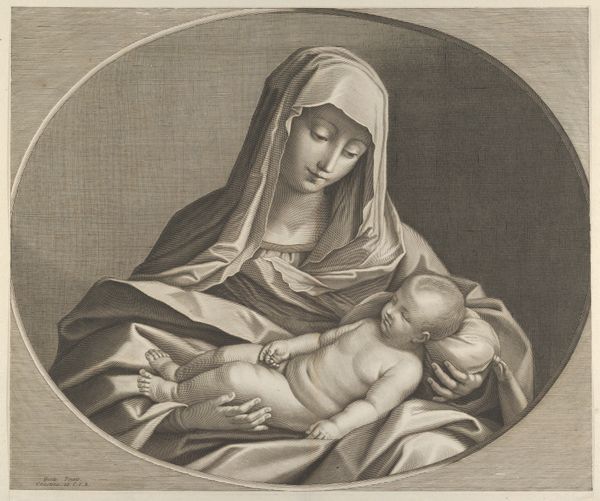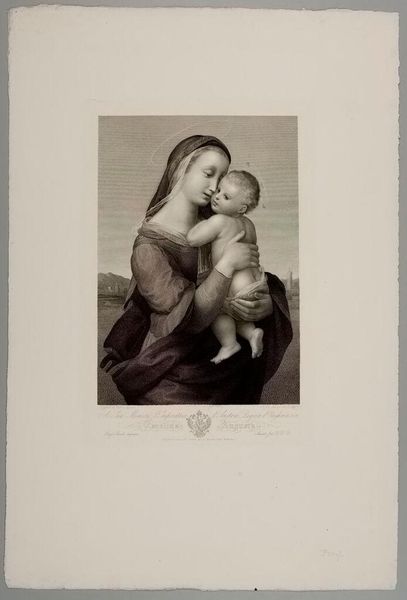
drawing, print, woodcut, wood-engraving
#
portrait
#
drawing
#
medieval
# print
#
figuration
#
woodcut
#
line
#
northern-renaissance
#
wood-engraving
Dimensions: 5 1/4 x 7 7/16 in. (13.34 x 18.89 cm) (image)14 x 18 in. (35.56 x 45.72 cm) (mat, Size I)
Copyright: No Copyright - United States
Curator: Looking at this wood-engraving titled "Madonna and Child," completed in 1890 by Timothy Cole, I immediately sense a profound serenity. The texture, even in monochrome, hints at the soft fabrics and skin. Editor: Serenity is a good word for it. But beyond that, it carries echoes of earlier artistic and spiritual longings. Notice the iconic framing: Madonna and Child imagery evokes a history of cultural representations of motherhood, divinity, and innocence reaching back centuries. It is interesting that Cole produced this piece late in the 19th century and yet seems to reference older traditions. Curator: Exactly. Cole's "Madonna and Child" is not merely a portrait but rather it seems like a visual echo, referencing the northern-Renaissance interpretations of medieval religious motifs, updated for the context of the late 19th century. Editor: And it’s interesting to examine this appropriation historically, considering how the industrial age complicated and often challenged traditional notions of family, community, and divinity. Perhaps such images offered a type of cultural or spiritual consolation at a time of radical transformations in social and political realms? Curator: I wonder what Cole would say, had he been pressed on his cultural motivations for this engraving. Surely such works offer audiences not simply a vision of past values, but a potential continuity of traditions in modern life. Even if those values were in dispute. The debates around immigration and industrial change at the time surely impacted these choices. Editor: Yes, even a wood-engraving carries significant ideological baggage. Cole's choice of subject carries the weight of symbolic traditions—purity, love, sacrifice—ideas which always undergo negotiation, of course. The faces themselves communicate this conflict between hope and disillusionment. See how the Madonna gazes downwards, a quiet acknowledgement of future sorrows, even as she tenderly protects the child? It is a symbolic tension that plays well on its viewers, even a century later. Curator: The piece certainly is compelling, and these visual allusions work to prompt an interaction between viewers today and the history of visual imagery and representation of motherhood. Editor: Precisely. Thank you, that exploration gave me some things to consider!
Comments
No comments
Be the first to comment and join the conversation on the ultimate creative platform.
